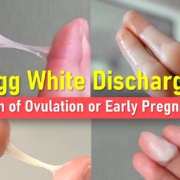Conception Date Calculator
Conception Date Calculator: Discovering When You Became Pregnant
Expectant mothers often wonder, “When did I conceive?” Determining a conception date can be tricky, especially if symptoms of implantation or early pregnancy are minimal or if there were multiple instances of sexual intercourse within the fertile window. Our conception calculator helps you estimate this important date and provides insight into your pregnancy timeline.
Related Calculators
What is a Conception Calculator?
A conception date calculator is a tool designed to estimate when fertilization likely occurred based on factors such as your due date or the first day of your last menstrual period. While these calculators can offer a good estimate, it’s important to remember they aren’t always 100% accurate due to natural cycle variations and the unpredictable nature of conception.
How Our Conception Calculator Works
Our pregnancy conception calculator uses your pregnancy’s expected due date to estimate your conception date and provides possible dates for sexual intercourse that may have led to pregnancy. Here’s what our calculator offers:
- Most likely conception date
- Probable conception date range
- Probable dates of intercourse resulting in pregnancy
- Possible conception date range
- Possible dates of intercourse that may have led to pregnancy
Conception Date Calculator from LMP
If you remember the first day of your last menstrual period (LMP), you can use our Ovulation Calculator to help estimate your conception or pregnancy date.
Interpreting Your Results
Understanding your conception calculator results is important:
- Most likely conception date: The most probable date of conception based on average ovulation timing.
- Probable conception date range: This allows for slight variations in ovulation timing.
- Probable intercourse dates: Accounts for sperm survival in the reproductive tract for up to several days.
- Possible conception and intercourse dates: Wider ranges that consider more variability in cycle length and sperm lifespan.
Fertilization, Conception, and Pregnancy
Understanding a conception calculator by due date starts with distinguishing ovulation, fertilization, and conception:
- Ovulation: The release of a mature egg from the ovary, typically around 14 days before the next menstrual period.
- Fertilization: Occurs when sperm meets the egg in the fallopian tube, usually within 24 hours of ovulation.
- Conception: Refers to both fertilization and implantation of the fertilized egg into the uterine lining, typically 6-12 days post-fertilization.
In summary, ovulation releases the egg, fertilization unites egg and sperm, and conception includes the whole process from fertilization through implantation, marking the start of pregnancy.
Why Use a Conception Calculator?
A baby conception calculator can be helpful for several reasons:
- Paternity clarification: It can help determine the likely conception timeframe if there’s a question of paternity.
- Planning prenatal care: Knowing your conception date aids in scheduling prenatal care and tracking development accurately.
- Learning about your body: Understanding your conception date provides insights into your cycle and fertility.
- Emotional connection: Knowing your likely conception date can foster a deeper connection to your pregnancy.
Conception Calculator Accuracy
Our accurate conception calculator offers valuable insights, but certain factors can influence accuracy:
- Irregular menstrual cycles: Irregular cycles make ovulation harder to predict, which affects the accuracy of the conception date.
- Implantation timing variations: The time from fertilization to implantation can vary, impacting date estimates.
- Sperm survival: Sperm can live in the female reproductive system for up to five days, allowing for conception days after intercourse.
- Late ovulation: Late ovulation can shift conception estimates, especially if based on an average cycle length.
For these reasons, our calculator provides a range of possible dates rather than one single answer.
Reverse Conception Calculator
A reverse conception calculator estimates your conception date by working backward from your due date. This is especially useful if you don’t remember your last menstrual period date but have a due date.
To use it as a reverse conception calculator, simply input your due date, and it will calculate your estimated conception dates and possible dates of sexual intercourse.
When to Consult a Healthcare Provider
While a conception calculator is useful, it’s no substitute for medical advice. Consult a healthcare provider for:
- Pregnancy confirmation
- Accurate dating of your pregnancy
- Proper prenatal care and monitoring
- Concerns about your pregnancy or health
Conclusion
Our conception calculator is an insightful tool for estimating when you likely became pregnant. By offering a range of possible dates, it accounts for the natural variability in conception timing, helping you better understand your pregnancy timeline. While this tool provides helpful insights, working closely with your healthcare provider is best for the most accurate information.
Whether you’re using the calculator for planning, paternity questions, or simply curiosity, we hope it provides valuable information as you embark on your pregnancy journey. Remember, each pregnancy is unique, and the joy of expecting goes beyond knowing the precise moment of conception.










